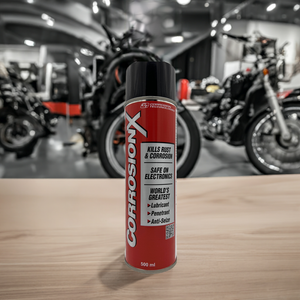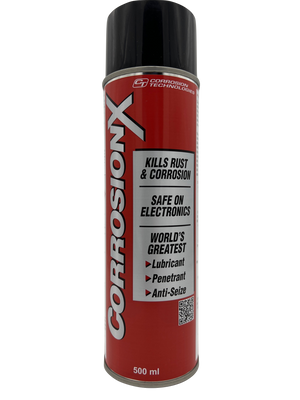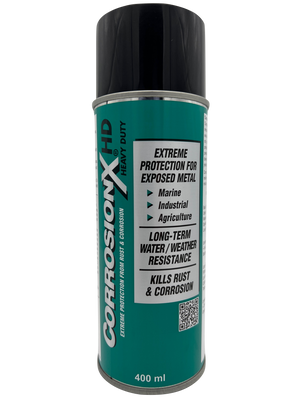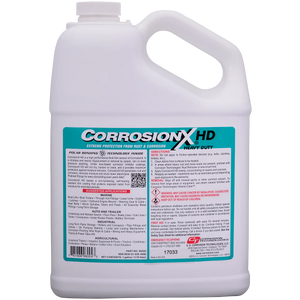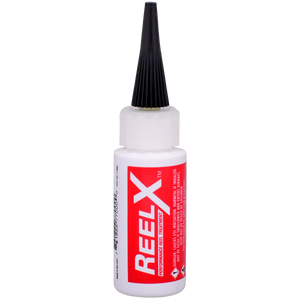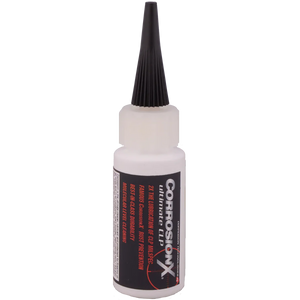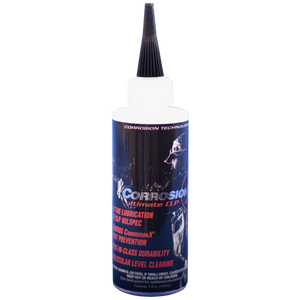The Silent Menace: Understanding Corrosion at its Core
Corrosion is like an uninvited guest at a party: it slips in quietly, and before you know it, it’s causing trouble that’s tough to fix. If you’ve ever wondered why rust seems to appear out of nowhere, you’re not alone. Many people simply accept corrosion as an unavoidable fact of life. But here’s the thing: if you understand the chemistry behind it, you can outsmart corrosion and protect your valuable equipment.
Oxidation 101: Why Rust Happens
Picture a piece of metal left out in the rain. After a few days, you might see tiny, dark-orange patches on the surface—those dreaded signs of rust. But have you ever paused to wonder what’s going on at the microscopic level?
Corrosion, in the simplest terms, is a chemical reaction. When metal (often iron or steel) meets oxygen in the presence of an electrolyte (often water or moisture laden with salts, pollutants, or other substances), a process called oxidation occurs. This reaction forms iron oxides—commonly referred to as rust. Rust, unfortunately, isn’t just an eyesore; it weakens metal by gradually eating it away. Over time, entire structures can become compromised. From humble garden tools to massive industrial machinery, corrosion doesn’t discriminate.
But it’s not limited to just iron or steel. Copper, aluminum, brass—you name it—each has its own version of corrosion. You might have seen that green patina on copper roofs or statues, which is essentially corrosion forming a thin outer layer. Sometimes, as with copper or bronze, that patina can be protective. But in many other cases, corrosion spells big trouble, especially if it’s allowed to continue unchecked.
Spotting the Trouble Early: Telltale Signs of Corrosion
One of the biggest mistakes people make is waiting until the corrosion is too obvious to ignore. If you can catch it in its early stages, you can prevent major headaches down the road. So, how do you know if corrosion is lurking?
- Discoloration: On steel or iron surfaces, this typically shows up as patches of red, orange, or brown. On aluminum, you might notice chalky deposits.
- Pitting or Flaking: Small pits on the metal surface, or areas that start to flake off, can indicate deeper corrosion beneath the surface.
- Unusual Texture: A rough or bubbly texture on your metal could be hiding a corrosion hotspot.
- Weakened Joints or Fasteners: If screws, rivets, or welds show signs of breakdown, corrosion could be the culprit.
Catching these indicators early is like stopping a leak in your roof before it turns into a flood. It might require a bit of vigilance, but the payoff is well worth it.
Environmental Battlefields: Common Places Where Corrosion Thrives
Some corners of our planet are practically vacation resorts for rust, offering all the right conditions for corrosion to thrive. If you’re working in or around these environments, corrosion prevention should be top-of-mind. Let’s take a tour through some of the most challenging terrains and see why they pose such a threat to metal.
Raging Seas: Coastal and Marine Challenges
If you’ve ever strolled along a beach and noticed rusted-out railings or boats with peeling paint, then you know the ocean can be brutal on metal. Salt acts as a powerful electrolyte. When metal is exposed to salty air or immersed in saltwater, chemical reactions speed up dramatically. Suddenly, the oxidation process gets a turbo boost. It’s not just large vessels that suffer, either. Even small fishing boats, piers, and coastal structures are in the line of fire.
The cyclical nature of tidal movements—where surfaces fluctuate between wet and dry, often multiple times a day—makes the matter worse. Damp salt deposits can remain on metal surfaces, continuing the corrosion process even when the tide is out or conditions appear dry. So, if your line of work or leisure keeps you near the sea, prepare for constant vigilance. But as we’ll discuss, there are steps you can take to fortify your gear against the forces of nature.
Industrial Hotspots: Factories and Chemical Plants
Industrial environments can feel like a war zone for metal. High temperatures, chemical fumes, dust, debris, and other contaminants all converge to create a near-ideal situation for corrosion to flourish. Imagine a factory that’s churning out chemical byproducts and steam. That mixture can cling to metallic surfaces and kickstart rust at an alarming rate.
It’s not just the factory floor; the entire supply chain can be affected. Transport vehicles, storage facilities, and production lines might all be vulnerable. If a major piece of equipment, such as a high-pressure steam boiler or critical manufacturing robot, starts to corrode, the financial and safety implications can be enormous. Routine maintenance, coupled with corrosion prevention methods, becomes absolutely essential in these scenarios.
Frosty Frontiers: Arctic Conditions
At first glance, you might assume cold weather would slow down corrosion, especially if water is frozen. Unfortunately, that’s not always the case. In extremely cold conditions, you often encounter the freeze-thaw cycle. During the day, any accumulated snow or ice might melt and seep into small cracks in the metal or paint. Then, as temperatures drop again, that water re-freezes, expanding and causing micro-fractures that allow more moisture to penetrate. Over time, these cracks grow, making it easier for rust to start and spread.
On top of that, road salts and chemicals are frequently used to combat icy surfaces. You guessed it—those salts can accelerate corrosion. If you’ve ever seen a vehicle from a cold, wintry climate, you’ve likely noticed rust along the wheel wells or undercarriage. That’s largely due to a steady assault of salt, moisture, and fluctuating temperatures.
Farm Life: Corrosion in Agricultural Settings
If you think city pollution is bad for metal, try leaving your tractor or farm equipment in a field that’s doused with fertilizers, manure, and insecticides. Agricultural areas pose a unique corrosion risk because of the variety of chemicals in use. Fertilizers containing nitrogen, phosphorus, and potassium can remain on metal surfaces and facilitate chemical reactions that create rust. Moisture from irrigation systems or morning dew is another factor, keeping surfaces perpetually damp. Then there’s the presence of organic acids from manure and other biological materials. It’s a perfect storm for corrosion, one that can significantly reduce the lifespan of expensive farm machinery.
When you rely on heavy-duty equipment for plowing fields, harvesting crops, or managing livestock, the last thing you need is a breakdown caused by rust. Therefore, adopting preventative measures becomes a core part of agricultural best practices. With the right approach, you can keep your tractors, harvesters, and even smaller tools running smoothly for years on end, despite the corrosive challenges lurking in a typical farm environment.
Building Your Defense: Strategies to Keep Corrosion at Bay
So how do you stand up to something that’s basically a force of nature? Think of corrosion prevention like building a fortress: each wall, moat, and tower plays a role in keeping invaders out. Below, we’ll explore various strategies you can employ to keep rust from invading your equipment.
Cleanliness as the First Shield
It might sound almost too simple, but regular cleaning is one of the most powerful weapons in your corrosion-fighting arsenal. Dirt, dust, grime, chemicals, and salts can cling to surfaces, essentially forming a launching pad for rust to take hold. By washing away these contaminants, you’re reducing the odds that the oxidation process can kick off in the first place.
Let’s say you have a set of gardening tools that you frequently use in damp soil. After a day’s work, those tools might be covered in mud and tiny mineral particles. If they remain dirty, you can bet rust will make itself at home. But with a quick rinse and thorough drying, you’re robbing corrosion of a foothold. When it comes to industrial or marine settings, cleaning can be more involved, possibly requiring specialized equipment or cleaning agents. Still, the principle remains the same: remove the corrosive agents, and you’re giving your metal surfaces a fighting chance.
Beyond Soap and Water: Enter CorrosionX
While standard cleaning agents do a decent job, certain products can take it up a notch. CorrosionX is one such solution. More than just a cleaner, it’s formulated to penetrate existing rust and dislodge contaminants, offering a level of protection that standard cleaners can’t match. By using it on tools or machinery already showing early signs of rust, you can prevent the corrosion from spreading. Plus, it leaves behind a micro-thin film that shields surfaces from further damage—sort of like a protective blanket for metal.
That extra barrier is especially handy in salty or humid conditions, where water droplets or salt crystals can cling to metal long after it appears dry. So if you’re regularly battling the elements—be they ocean spray, chemical fumes, or farm runoff—this specialized approach to cleaning can help you stay one step ahead of corrosion.
Choosing the Right Armor: Protective Coatings
Once you’ve got your metal surfaces clean, the next logical step is to armor them up. Protective coatings act like a suit of armor, fending off moisture, chemical agents, and more. Paints, lacquers, and varnishes are commonly used for large structures—think bridges, fences, or industrial equipment. These coatings effectively seal the metal, limiting its direct contact with corrosive elements. If you’ve ever painted a metal gate, you’re essentially giving it a weather-resistant overcoat.
On a smaller scale or for intricate equipment with lots of moving parts, waxes and oils can serve a similar purpose. The idea here is to create a film on the metal surface that repels water and slows oxidation. This can be especially helpful for gear that can’t be easily painted or for parts that need to move smoothly, like hinges or gears.
CorrosionX as a Multi-Purpose Shield
While many products claim to do it all, CorrosionX comes closer than most. Think of it as a multi-purpose tool that can clean, lubricate, and protect in one go. Once you’ve cleaned your surface, applying CorrosionX ensures that any microscopic crevices or hard-to-reach spots get the same level of protection as the larger surface areas.
Traditional oils and waxes might sit on the surface, but CorrosionX bonds to metal at a molecular level. Essentially, it forms a protective layer that doesn’t easily wash away or break down. For environments exposed to constant humidity or salt spray, having that level of adherence can be a game-changer. And if you’re combining CorrosionX with paint or lacquer, you can create a double-layer approach: the paint serves as a tough outer shell, while the bonded molecules of CorrosionX give you deeper, more resilient coverage.
Material Mastery: The Power of Corrosion-Resistant Metals
Sometimes the best defense is to start strong from the get-go. Choosing metals that are inherently resistant to rust can save a lot of trouble (and money) down the line. Stainless steel is a prime example. It contains chromium, which forms a thin oxide layer that protects the steel from further corrosion. Aluminum is another material known for its natural oxide film, though it has limitations in extremely corrosive conditions.
Other specialized alloys—like those containing nickel, chromium, or molybdenum—can offer an even higher degree of protection for specialized applications. But no metal is completely immune. Even stainless steel can corrode under certain conditions, particularly if the protective oxide layer is compromised. That’s where combining corrosion-resistant metals with products like CorrosionX can deliver an added boost. If you’re using stainless steel for a boat railing, for instance, applying a protective coat of CorrosionX on top can extend its lifespan even more, giving you peace of mind for years to come.
Routine Maintenance: The Ongoing Battle
Corrosion prevention isn’t a “set it and forget it” proposition. Sure, you can clean and coat your equipment once, but that doesn’t mean you’ll be rust-free forever. Metal surfaces face constant stress from the environment: temperature shifts, regular use, accidental impacts, and exposure to water or chemicals. Over time, protective layers can wear down, leaving your metal naked before the forces of nature.
That’s why regular inspections are crucial. Maybe you schedule a monthly or quarterly “corrosion check” depending on your environment. This could be as simple as giving equipment a once-over for signs of discoloration or roughness. If you find anything, you can clean it off and reapply your protective coating as needed. By catching minor issues early, you’re saving yourself from costly repairs—or worse, a total equipment replacement—down the road. The key is consistency. Just like brushing your teeth every day helps you avoid cavities, routine maintenance wards off corrosion-related disasters.
CorrosionX to the Rescue: A Deep Dive into a Powerful Solution
Over the years, countless products have hit the market claiming to beat rust into submission. Yet many of these solutions fall short, either by providing short-term fixes or by protecting only certain parts of the metal. CorrosionX stands out because it offers a comprehensive approach: it penetrates, cleans, lubricates, and fortifies. Let’s take a closer look at why this product has become a go-to choice for professionals and hobbyists alike.
What Makes CorrosionX Different?
Many anti-corrosion sprays and coatings create a protective film on the metal surface. That’s helpful, of course, but the film can sometimes be thin or easily washed away. CorrosionX, on the other hand, uses a proprietary technology that causes electrically charged molecules to bond with the metal. Imagine it as a tiny army of defenders that cling tightly, repelling water, salt, and other corrosive agents.
Because of its unique formulation, CorrosionX can creep into tight spaces—like the seams of machinery or the threads of a bolt—where other products can’t reach. This creeping action is incredibly valuable for addressing existing corrosion. If a patch of rust has already started, CorrosionX can get underneath it, breaking the bond between the rust and the base metal. That means you can clean it off more easily, preventing the rust from spreading further.
It also leaves surfaces slick enough to serve as a lubricant. If you’re working with hinges, chains, or gears, CorrosionX can reduce friction and wear while also preventing new rust from forming. That dual functionality—corrosion protection plus lubrication—can reduce the number of products you need in your maintenance routine, which ultimately saves you time and money.
Real-World Applications: Tools, Vehicles, and Structures
Let’s talk specifics. Say you have a collection of hand tools, each of which cost a decent chunk of change. If you’re a professional mechanic, or even an avid DIYer, you know how frustrating it can be to see orange splotches appearing on your beloved tools. A quick application of CorrosionX after each use can remove moisture, clean off dirt or grease, and protect the tools until you need them next. Over time, this simple habit can make your tools last significantly longer, sparing you from the cost and hassle of constant replacements.
Vehicles are another big use case. Whether it’s a car, a motorcycle, a boat, or even a commercial truck, moving metal parts are exposed to the elements every time you hit the road. If you live in a region that salts the roads during winter, your undercarriage is a prime target for corrosion. Applying CorrosionX to the underside of your vehicle, wheel wells, and other vulnerable spots can serve as a second line of defense. That’s particularly valuable for off-road or marine vehicles, which face some of the harshest conditions around.
And let’s not forget structures like gates, fences, railings, and metal roofing. These pieces often get overlooked because they’re stationary. However, the weather doesn’t discriminate between something that moves and something that doesn’t. If metal is exposed, it’s at risk. Spraying or brushing on a coating of CorrosionX can keep your exterior metal surfaces in better shape, even through extreme weather cycles.
Availability in Finland: Tallitkuntoon at www.tallitkuntoon.fi
For readers in Finland, you’re in luck. While CorrosionX has garnered fans across the globe, it’s also readily available closer to home. In Finland, you can find CorrosionX products through Tallitkuntoon, a trusted provider of corrosion prevention solutions. To learn more or to place an order, head over to their website at www.tallitkuntoon.fi. Whether you’re protecting farm equipment in the Finnish countryside or maintaining a boat along the coast, CorrosionX can help you stand your ground against rust.
Long-Term Vision: How to Keep Winning the Fight Against Corrosion
So, you’ve learned about the different types of environments that encourage rust, discovered how cleaning and protective coatings can keep corrosion at bay, and seen how a specialized product like CorrosionX adds another layer of defense. What’s next? Corrosion prevention is an ongoing endeavor—like going to the gym to stay fit, not just once, but as a regular part of your routine. Below are some ways you can maintain your metal assets for the long haul.
Proactive Monitoring and Inspection
Wouldn’t it be great if metal would just raise its hand and say, “Hey, I’m starting to rust over here”? Since that’s not going to happen, it’s up to you to spot issues before they escalate. A proactive monitoring plan can be as simple or as complex as you want it to be. If you’re a small business owner or a homeowner, it might mean marking your calendar for a monthly walk-around to check all metal surfaces. If you run a factory, you might implement an automated inspection system that uses sensors to detect structural changes, or you might assign a maintenance team specifically tasked with routine corrosion checks.
However you do it, the point is consistency. When you catch a small patch of rust early on, you can often remove it with a wire brush or a mild abrasive pad, then treat the area with CorrosionX or another protective product. That quick fix can prevent a major breakdown weeks or months later. Think of it like personal health: a quick visit to the doctor to treat a minor ailment is a lot cheaper and less painful than ignoring the symptoms until you need serious medical intervention.
Future Innovations in Corrosion Prevention
Corrosion science isn’t standing still. Researchers around the world are constantly exploring new coatings, additive manufacturing techniques, and advanced materials that could one day make rust a thing of the past. From nanotechnology-driven films that self-heal after scratches to more eco-friendly coatings that avoid hazardous chemicals, the future of corrosion prevention is promising.
In the meantime, however, the best approach is still a blend of good old-fashioned diligence—cleaning, inspecting, and applying protective coatings—combined with reliable, proven products like CorrosionX. By staying informed about the latest advancements, you can adapt your strategy over time. Perhaps a decade from now, we’ll have an even wider array of tools for fighting rust, and you’ll be able to combine them with established solutions like CorrosionX for an unbeatable corrosion prevention plan.
Putting It All Together: A Roadmap for Corrosion Prevention
When you stop to consider all the methods we’ve discussed, corrosion prevention can feel like a multi-step process. But let’s step back and look at the bigger picture. At its core, protecting metal from rust boils down to a handful of key principles:
- Keep Surfaces Clean: Whether it’s a quick rinse or a deep scrub, removing contaminants goes a long way in slowing corrosion.
- Dry Thoroughly: Moisture is the main fuel for corrosion. Eliminating it is like cutting off the oxygen supply to a fire.
- Apply Protective Barriers: Paint, wax, oil, or specialized products like CorrosionX create a shield that keeps moisture and salts away.
- Choose Wisely: When possible, opt for metals and alloys that have natural corrosion resistance.
- Inspect Regularly: Rust rarely announces itself loudly. Routine checks can help you spot issues before they escalate.
Follow these basic principles, and you’ll be well on your way to thwarting rust in even the toughest environments. Corrosion may be a formidable adversary, but it’s no match for a well-prepared and consistent maintenance routine.
Deep Dive: Expanding on Critical Details for an Ongoing Battle
Let’s take a moment to expand on some of these strategies, because the devil—just like corrosion—can hide in the details. If you truly want to master the art of corrosion prevention, consider these additional factors.
Humidity Control and Ventilation
It’s one thing to clean your surfaces, but what if your environment is perpetually damp? High humidity levels can make it feel like you’re fighting a losing battle. If you’re storing metal items in a garage, shed, or warehouse, installing dehumidifiers or ensuring proper ventilation can drastically reduce moisture buildup. This is especially important if your facility is located in a naturally humid or coastal region.
If your building can’t be retrofitted with a full-scale climate control system, simple measures can still help. For instance, make sure any leaks or drips are fixed promptly. Standing water or recurring wet spots create an ideal environment for oxidation to take hold. While these steps might seem obvious, they often get overlooked in the day-to-day shuffle, allowing corrosion to creep in unchallenged.
Electrochemical Methods
In certain high-risk applications—like offshore oil rigs or underground pipelines—engineers sometimes use a method known as cathodic protection. Without going into too much technical detail, cathodic protection involves introducing a “sacrificial” metal that will corrode instead of the primary metal structure. While this might sound a bit like medieval alchemy, it’s a well-established science. The sacrificial anode (often made of zinc or magnesium) is strategically connected to the structure you want to protect. Corrosion then targets the anode rather than your main metal asset.
Even in less extreme conditions, you might see smaller examples of this approach. Boat owners sometimes attach zinc anodes to their hulls or outboard motors to offset galvanic corrosion. Combining such methods with regular applications of CorrosionX can create a double safety net for your equipment, especially in marine or heavily industrialized environments.
Mindful Storage and Handling
Sometimes corrosion issues are purely self-inflicted. Maybe your workshop is messy, and tools get tossed into a damp corner without a second thought. Or perhaps your industrial facility stacks metal parts outside, unprotected from rain and snow, simply because it’s convenient. Over time, these careless habits invite corrosion to run rampant.
Developing a thoughtful storage strategy—such as sealed containers, rust-proof cabinets, or dedicated racks—can help keep moisture and contaminants at bay. Even storing metal parts slightly off the ground can reduce the likelihood of water pooling beneath them. If you frequently transport equipment or machinery through tough conditions, consider using protective covers or tarps to shield metal surfaces from direct exposure.
Training and Employee Awareness
If you’re a business owner or manager, keep in mind that prevention isn’t just about products or procedures; it’s also about people. Your team needs to be on the same page about the importance of corrosion prevention. This might involve training sessions to demonstrate correct cleaning procedures, how to apply CorrosionX, and what to look for during inspections. When everyone understands the stakes—both in terms of financial costs and safety risks—corrosion prevention becomes a collective effort rather than a solo mission.
Conversely, if you’re a one-person operation, make sure you educate yourself thoroughly. Read product labels, experiment with different application methods, and keep track of what works best for your specific setup. Even small tweaks to your routine can result in big improvements in how well your equipment resists corrosion over time.
Balancing Cost and Benefit
Some might argue that going all-in on corrosion prevention can be expensive. After all, products like CorrosionX, specialty paints, or sophisticated ventilation systems have a price tag. But consider the alternative. Replacing corroded equipment, repairing structural damage, or dealing with unplanned downtime can be far more costly in the long run. Think of prevention as an investment that pays dividends by extending the life of your assets and reducing the likelihood of large-scale failures.
If budget constraints are an issue, start with the most critical or expensive pieces of equipment and work your way down to smaller items. Focus on high-risk areas like joints, hinges, or spots where you’ve seen rust form in the past. Even a partial protection plan is better than none. And as you see the results—like not having to replace that expensive industrial valve for yet another year—you’ll likely find the motivation (and the budget) to expand your corrosion prevention efforts.
Conclusion: Rust Doesn’t Stand a Chance Against a Well-Prepared Defense
Corrosion is often viewed as inevitable—like taxes or Monday mornings. But with the right approach, you can keep rust from wreaking havoc on your metal surfaces and structures. Whether you’re battling salty sea air, chemical fumes, subzero temperatures, or nutrient-rich farmland, the principles remain the same: clean, protect, maintain, and monitor. It sounds straightforward because it is. But that doesn’t mean it’s easy—staying vigilant and committing to a routine requires discipline.
Fortunately, tools like CorrosionX can make the job a lot easier. By penetrating existing rust, providing a reliable protective layer, and serving as a lubricant, it addresses multiple pain points in one fell swoop. And if you happen to be in Finland, you can readily grab your supply of CorrosionX from Tallitkuntoon at www.tallitkuntoon.fi. The combination of proven products and a proactive mindset is a powerful recipe for keeping corrosion at bay.
So, whether you’re an industrial worker, a boat enthusiast, a farmer, or a homeowner looking to protect your investments, remember that the fight against rust isn’t a one-time battle. It’s an ongoing campaign that requires knowledge, preparation, and consistent action. But here’s the silver lining: every ounce of effort you put into stopping corrosion now saves you from piles of rust and sky-high repair bills later on.
Ready to get started? The next time you spot a rusty bolt or a discoloration forming on a metal part, don’t just sigh and walk away. Roll up your sleeves, grab your cleaning supplies and a bottle of CorrosionX, and show rust who’s boss. In the grand scheme of things, taking these steps is like building a fortress around your metal assets, ensuring they stand strong in even the harshest environments. And that, my friend, is how you conquer corrosion—one small victory at a time.


